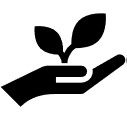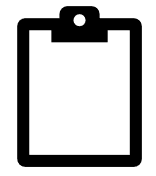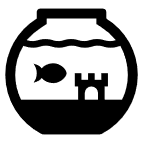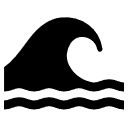Stormwater
The Town of Cortlandt is a Municipal Separate Storm Sewer System (MS4) regulated by the New York State Department of Environmental Conservation (NYSDEC). As a regulated MS4, the Town is required to comply with its Phase II Storm Water Management Plan.
Cortlandt’s Stormwater Officer information below:
Michael Preziosi, P.E.
Director – Department of Technical Services
Town of Cortlandt
1 Heady Street
Cortlandt Manor, NY 10567
www.townofcortlandt.com
Email: stormwater@townofcortlandt.com
Office: 914-734-1060
A. WHAT IS STORMWATER?
Stormwater runoff happens when rain or melting snow flows over surfaces like roads, rooftops, and lawns instead of soaking into the ground. As it travels, it collects pollutants, such as transports soil, animal waste, salt, fertilizers, oil and grease, pesticides, litter, and other potential pollutants, which then flow into rivers, lakes, and oceans. This pollution can lead to several problems: it can dirty our drinking water, harm fish and other wildlife, and increase the risk of flooding!
In our community, this means that our natural resources get polluted, which can affect our health, make our recreational areas less enjoyable, and potentially increase the costs of cleaning up the water we rely on.
B. WHAT IS THE PROBLEM?
Stormwater gathers a variety of pollutants that are mobilized during runoff events. Polluted runoff degrades our lakes, rivers, wetland and other waterways runoff. Transported soil clouds the waterway and interferes with the habitat of fish and plant life.
Nutrients such as phosphorus and nitrogen can promote the overgrowth of algae, deplete oxygen in the waterway and be harmful to other aquatic life. Toxic chemicals from automobiles, sediment from construction activities and careless application of pesticides, herbicides and fertilizers threaten the health of the receiving waterway and can kill fish and other aquatic life. Bacteria from animal wastes and illicit connections to sewerage systems can make nearby lakes and bays unsafe for wading, swimming and the propagation of edible shellfish. According to an inventory conducted by the United States Environmental Protection Agency (EPA), half of the impaired waterways are affected by urban/suburban and construction sources of stormwater runoff.
C. WHAT IS BEING DONE?
Significant improvements have been achieved in controlling pollutants that are discharged from sewage and wastewater treatment plants. Across the nation, attention is being shifted to other sources of pollution such as stormwater runoff. Stormwater management, especially in urban areas, is becoming a necessary step in seeking further reductions in pollution in our waterways and presents new challenges.
Stormwater runoff normally cannot be treated in the same way as accomplished by sewage and wastewater treatment plants. More often than not, end-of-pipe controls are not the best answer for removing pollutants from stormwater runoff. Pollutants in runoff enter our waterways in numerous ways and the best way of control is usually at the pollutant's source. Sometimes, significant improvements can be made by employing best management practices, or "BMPs". Proper storage of chemicals, good housekeeping and just plain paying attention to what's happening during runoff events can lead to relatively inexpensive ways of preventing pollutants from getting into the runoff in the first place and then our waterways.
The EPA and the NYSDEC are increasing their attention in several ways. A federal regulation, commonly known as Stormwater Phase II, requires permits for stormwater discharges from Municipal Separate Storm Sewer Systems (MS4s) in urbanized areas and for construction activities disturbing one or more acres. To implement the law, the New York State Department of Environmental Conservation has issued two general permits, one for MS4s in urbanized areas and one for construction activities. The permits are part of the State Pollutant Discharge Elimination System (SPDES)
Resources:
- Stormwater webpage - NYSDEC
- Town of Cortlandt WebGIS webpage - TOC
D. HOW CAN YOU HELP?
| The Problem | The Solution | Additional Links | |
| ILLICIT DISCHARGE |
Federal regulations define an illicit discharge as “...any discharge to an MS4 that is not composed entirely of stormwater...” with some exceptions. These exceptions include discharges from NPDES-permitted industrial sources and discharges from fire-fighting activities. Illicit discharges are considered “illicit” because MS4s are not designed to accept, process, or discharge such non-stormwater wastes such as septic or washing machine hookups to our storm drains. |
Report Illicit Discharge to the Code Enforcement Department 914-734-1010 |
Click the link to access the Illicit Discharge Detection and Elimination Fact Sheet |
| SEPTIC SYSTEMS |
Leaking or poorly maintained septic systems can release harmful nutrients and pathogens, like bacteria and viruses, into stormwater. When this polluted runoff flows into nearby waterbodies, it can create serious health risks and environmental problems. Pathogens from these systems can lead to health issues for people and damage the surrounding environment. |
Inspect your system every 3 years and pump your tank as necessary (every 3 to 5 years).
|
Click the link to learn more about the importance of inspecting your septic system. Resources: Septic System Management website – Health Department Septic Maintenance webpage – TOC |
| LAWN CARE |
Excess fertilizers and pesticides applied to lawns and gardens wash off and pollute streams. Yard clippings and leaves can wash into storm drains and contribute nutrients and organic matter to streams. |
Don’t overwater your lawn. Consider using a soaker hose instead of a sprinkler. Use pesticides and fertilizers only when necessary. Consider using organic mulch or safer pest control methods whenever possible. Don’t leave compost or mulch yard waste in the street or sweep it into storm drains or streams. Cover piles of dirt or mulch being used in landscaping project. |
|
| LANDSCAPING | Excess paving and the installation of impermeable landscaping features. |
Permeable Pavement: Rain Barrels: Rain Gardens and Grassy Swales: Vegetated Filter Strips: |
A list of native plants for in this area could be found here: The Department of Environmental Conservation’s Native Flower A list of accepted and prohibited trees for this area could be found here: The Town of Cortlandt’s Chapter 283 Appendix B |
| CAR MAINTENANCE |
Washing your car and degreasing auto parts at home can send detergent and other contaminants through the storm sewer system. Dumping automotive fluids into storm drains has the same results as dumping the material directly into a waterbody. |
We ask that you consider:
|
|
| PET WASTE |
Pet waste can be a major source of bacteria and excess nutrients in local waters. |
When walking your pet, remember to pick up the waste and dispose of it properly. Flushing pet waste is the best disposal method. Leaving pet waste on the ground increases public health risks by allowing harmful bacteria and nutrients to wash into the storm drain and eventually into local waterbodies. |
E. HOW CAN CONSTRUCTION DESIGNERS AND CONTRACTORS HELP?
Land development activities within the Town of Cortlandt may be subject to the State Pollutant Discharge Elimination System (SPDES) General Permit for Stormwater Discharges from Construction Activity. This means that designers are required to develop and implement a Stormwater Pollution Prevention Plan (SWPPP) in accordance with DEC standards. Below are helpful links for design engineers and contractors:
Construction Stormwater Toolbox FAQ Construction Activities When is a SWPPP required?
F. HELPFUL REPORTS, MAPS, AND RESOURCES
Stormwater Plan Outfall Report Example Stormwater Outfall Map
Resources:
- NYSDEC Stormwater Interactive Map website – NYSDEC
- NYS Environmental Resource Mapper website – NYSDEC
- Westchester County GIS website – WC
- Town of Cortlandt GIS website – TOC
KEEP LEARNING ABOUT OUR ENVIRONMENT
For additional environmental information related to the Town of Cortlandt, please click the icons below:
Impaired Water Bodies Native Flowers Accepted & Prohibited Tree Species Flooding
Resources:
- NYSDEC State Protected Plants – website
CORTLANDT’S ANNUAL STORMWATER REPORTS
Cortlandt's Annual Stormwater Reports as submitted to the New York State Department of Environmental Conservation (NYSDEC).












